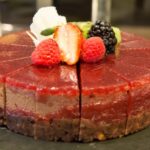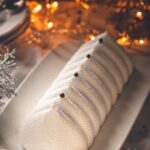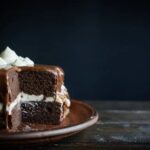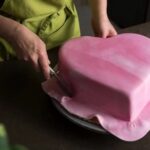Are you looking for a simple yet elegant way to decorate your cakes? If so, learning how to decorate a cake with powdered sugar can be a great option for adding a touch of beauty to your baked creations. Powdered sugar, also known as confectioners’ sugar or icing sugar, can be used to create delicate designs and patterns that will surely impress your friends and family.
Decorating with powdered sugar offers a versatile and effortless way to add flair to any type of cake, whether it’s a classic birthday cake or an intricately designed wedding cake. In this article, we will explore the different types of powdered sugar available and their uses in cake decorating.
We will also discuss the essential tools and supplies needed for creating stunning powdered sugar decorations, as well as provide a step-by-step guide on how to properly apply powdered sugar to a cake.
Furthermore, we will delve into creative decorating techniques using powdered sugar and offer tips and tricks for achieving professional-looking results. Whether you’re a beginner or an experienced baker, we’ll cover common mistakes to avoid when decorating a cake with powdered sugar and provide ideas for cake designs and themes that work well with powdered sugar decorations.
So if you’re ready to elevate your cake decorating skills, read on to discover the endless possibilities of using powdered sugar as your go-to cake decorating tool.
Different Types of Powdered Sugar and Their Uses in Cake Decorating
When it comes to decorating a cake with powdered sugar, it’s important to understand the different types of powdered sugar available and how they can be used in cake decorating. There are two main types of powdered sugar: regular powdered sugar and confectioners’ sugar.
Regular powdered sugar contains around 3% cornstarch, which helps prevent caking and clumping. On the other hand, confectioners’ sugar is simply another name for powdered sugar, but it’s often used to refer to a finer consistency of powdered sugar.
Regular Powdered Sugar
Regular powdered sugar is the most commonly used type of powdered sugar for cake decorating. Its slightly coarser texture makes it great for creating designs using stencils or templates, as it holds its shape well when sifted onto the cake. This type of powdered sugar is also ideal for creating crisp lines and patterns on the surface of the cake.
Confectioners’ Sugar
Confectioners’ sugar, on the other hand, has a much finer texture compared to regular powdered sugar. It’s perfect for creating a soft, delicate dusting on top of cakes and pastries. This type of powdered sugar is commonly used to give baked goods a light coating or to create a smooth, even layer of powder on top of frosting or glazes.
Understanding the differences between these two types of powdered sugar will help you choose the right one for your specific cake decorating needs, whether you’re looking to create intricate designs or achieve a more subtle dusting effect on your cakes.
Essential Tools and Supplies Needed for Decorating a Cake With Powdered Sugar
When it comes to decorating a cake with powdered sugar, there are a few essential tools and supplies that you will need to achieve the best results. While decorating with powdered sugar is relatively simple, having the right equipment can make the process even easier. Here are some of the key items you should have on hand before you start decorating:
Sifter
One of the most important tools for applying powdered sugar to a cake is a sifter. This kitchen gadget helps to evenly distribute the sugar over the surface of the cake, ensuring a smooth and consistent look. Look for a fine-mesh sifter to prevent clumps and achieve a professional finish.
Stencil or Template
To create decorative patterns or designs with powdered sugar, having a stencil or template can be incredibly helpful. These can be made from paper or purchased in various designs to add an extra touch of elegance to your cake.
Powdered Sugar Shaker
While not absolutely necessary, a powdered sugar shaker can make applying the sugar much more controlled and precise. These shakers often come with adjustable tops, allowing you to sprinkle just the right amount of sugar onto your cake without overwhelming it.
In addition to these specific items, having a smooth and flat surface for your cake, as well as clean and dry hands, are also essential for successful powdered sugar decoration. By having these tools and supplies on hand, you’ll be well-prepared to create beautifully decorated cakes using powdered sugar.
Step-by-Step Guide on How to Properly Apply Powdered Sugar to a Cake
Decorating a cake with powdered sugar can add a beautiful and delicate touch to your baked creation. Whether you’re a beginner or an experienced baker, using powdered sugar for decorating offers a simple yet elegant way to enhance the look of your cakes. Below is a step-by-step guide on how to properly apply powdered sugar to a cake:
- Prepare Your Cake: Before applying powdered sugar, ensure that your cake is completely cool. It’s best to decorate the cake once it has cooled down to avoid the sugar from melting onto the surface.
- Choose Your Design: Decide on the design or pattern you want to create with the powdered sugar. This could be as simple as dusting the entire cake for a uniform look, or using stencils and cut-outs for more intricate designs.
- Get Creative: Using stencils, lace doilies, or even paper cut-outs, place them onto the surface of the cake where you want to apply the powdered sugar. This will help create precise designs and patterns.
While these steps provide a basic guideline for applying powdered sugar to a cake, there are numerous creative techniques that can be used to achieve unique and stunning results. Experimenting with different tools and methods can help you discover your own signature style when it comes to decorating with powdered sugar. With practice and patience, you can achieve professional-looking results that will impress any guest at your next gathering.
Creative Decorating Techniques Using Powdered Sugar
When it comes to decorating a cake with powdered sugar, there are various creative techniques that can be used to achieve stunning and visually appealing results. One popular method is using stencils to create intricate patterns on the cake’s surface.
Stencils can be purchased in a wide range of designs, or they can also be easily made at home using parchment paper or cardstock. Simply place the stencil over the cake and use a fine-mesh sieve to sprinkle powdered sugar over the design for a beautiful and professional-looking finish.
Another creative technique for decorating with powdered sugar is using cookie cutters as templates. By placing different shaped cookie cutters onto the cake and dusting powdered sugar inside the cutouts, unique and decorative designs can be achieved. This method is particularly effective for creating themed cakes for special occasions such as birthdays, weddings, or holidays.
For those who prefer a more freehand approach to decorating, simply using a small sifter or shaker to apply powdered sugar in a swirling or abstract pattern can add an elegant touch to any cake. This method allows for endless creativity and personalization, making each cake decoration truly unique.
| Creative Technique | Description |
|---|---|
| Stenciling | Using stencils to create intricate patterns on the cake’s surface by sprinkling powdered sugar through them. |
| Cookie Cutter Templates | Using cookie cutters as templates by dusting powdered sugar inside the cutouts for unique designs. |
| Freehand Application | Applying powdered sugar in swirling or abstract patterns using a small sifter or shaker for personalized decorations. |
Tips and Tricks for Achieving Professional-Looking Results
Achieving professional-looking results when decorating a cake with powdered sugar requires attention to detail and some important tips and tricks. One key tip is to ensure that the cake surface is completely smooth before applying the powdered sugar. Any bumps or imperfections in the frosting can affect the overall look of the powdered sugar decoration. Using a cake smoother or offset spatula can help achieve a flawless finish.
Another important trick is to use stencils for precision when applying powdered sugar to create intricate designs on the cake. This can help avoid any messy or uneven application of the sugar, resulting in a more professional-looking outcome. Stencils come in various patterns and shapes, allowing for endless possibilities in decorating with powdered sugar.
In addition, it’s crucial to handle the powdered sugar with care to prevent it from scattering all over the cake. Dusting the sugar lightly and evenly through a fine-mesh sieve or shaker can help control its distribution.
To further enhance the professionalism of the design, using vinyl or silicone stencils instead of paper ones can result in cleaner lines and less chance of smudging during application. These tips and tricks can elevate the overall appearance of a cake decorated with powdered sugar, making it look like it was done by a skilled pastry chef.
Common Mistakes to Avoid When Decorating a Cake With Powdered Sugar
Decorating a cake with powdered sugar can be a beautiful and delicious way to add an elegant touch to any dessert. However, there are common mistakes that bakers should avoid in order to achieve the best results. Here are some common mistakes to steer clear of when using powdered sugar for cake decorating:
1. Using too much powdered sugar: One of the most common mistakes when decorating a cake with powdered sugar is using too much of it. This can result in an overpowering taste and an unappealing appearance on the cake. It’s important to use a light hand when dusting the sugar onto the cake to achieve a delicate and balanced look.
2. Not considering the moisture content of the cake: Another mistake to avoid is not taking into account the moisture content of the cake before applying powdered sugar. If the cake is too moist, the powdered sugar may dissolve quickly, resulting in a lackluster appearance. It’s essential to wait until the cake has cooled completely before dusting it with powdered sugar to ensure that it adheres properly.
3. Applying powdered sugar too far in advance: Some bakers make the mistake of dusting their cakes with powdered sugar too far in advance, which can result in the sugar being absorbed into the frosting or evaporating over time. To avoid this, it’s best to decorate with powdered sugar just before serving or presenting the cake to maintain its visual appeal.
By keeping these common mistakes in mind and following best practices for decorating with powdered sugar, bakers can achieve professional-looking results that will impress their guests and elevate their dessert presentation.
Ideas for Cake Designs and Themes That Work Well With Powdered Sugar Decorations
Decorating a cake with powdered sugar opens up a world of creative possibilities. Whether it’s for a special occasion or just for fun, there are numerous cake designs and themes that work well with powdered sugar decorations. One popular choice is using stencils to create elegant patterns on the cake’s surface.
From floral designs to geometric shapes, the options are practically endless. Stencils can be purchased at baking supply stores, or you can even make your own using parchment paper and scissors.
Another idea for powdered sugar decorations is to create a rustic or vintage look on the cake. This style works particularly well with naked cakes, where the frosting is minimal or completely absent. By lightly dusting powdered sugar over the top of the cake and allowing some of it to cascade down the sides, you can achieve a charming, old-fashioned appearance that’s perfect for casual gatherings and outdoor events.
For those who prefer a more whimsical approach, consider using powdered sugar to depict seasonal or holiday-themed designs on your cake. For example, during Christmas, you could use a stencil to sprinkle powdered sugar in the shape of snowflakes onto the cake. Alternatively, for Halloween, you might create spooky silhouettes like bats or ghosts. The versatility of powdered sugar makes it easy to experiment with different themes and have fun while decorating your cakes.
| Ideas for Cake Designs/Themes | Description |
|---|---|
| Stenciled Patterns | Use stencils to create elegant patterns such as flowers or geometric shapes |
| Rustic/Vintage Look | Create an old-fashioned appearance by lightly dusting powdered sugar over naked cakes |
| Seasonal/Holiday Designs | Depict snowflakes for Christmas or spooky silhouettes for Halloween using powdered sugar, |
Conclusion
In conclusion, decorating a cake with powdered sugar can be a fun and versatile way to add a beautiful finishing touch to your baked creation. Whether you are a beginner or an experienced baker, the use of powdered sugar offers endless possibilities for creativity and personalization. From simple dusting to intricate stenciling and designs, there are numerous techniques that can be used to achieve stunning results.
It is important to remember that practice makes perfect when it comes to decorating with powdered sugar. Don’t be afraid to experiment with different tools, supplies, and techniques to find what works best for you. With time and patience, you can master the art of using powdered sugar as a decorative element for your cakes.
So, why not give it a try? With the right tools, supplies, and a bit of inspiration, you can create beautifully decorated cakes that will impress your family and friends. Whether it’s for a special occasion or just for fun, decorating with powdered sugar can add that extra touch of elegance and charm to your homemade treats. So go ahead, unleash your creativity and start experimenting with this delightful cake decorating technique today.
Frequently Asked Questions
How Do You Get Powdered Sugar to Stick to a Cake?
To get powdered sugar to stick to a cake, you can sprinkle it over the cake while it is still warm. The warmth of the cake will help the powdered sugar adhere to the surface.
Another method is to lightly brush the surface of the cake with a simple syrup or a thin layer of frosting before dusting it with powdered sugar.
Do You Put Powdered Sugar on a Warm or Cool Cake?
It’s best to put powdered sugar on a warm cake rather than a cool one. The warmth of the cake helps the powdered sugar adhere and creates a nice, even coating on the surface. If you apply it to a cool cake, the powdered sugar may not stick as well and can end up looking uneven.
How Do You Dust a Cake With Powdered Sugar Without a Sifter?
If you don’t have a sifter, there are alternative ways to dust a cake with powdered sugar. One technique is to use a fine-mesh sieve or strainer and gently tap it over the cake to evenly distribute the powdered sugar.
Another option is to fill a small, clean salt shaker or spice shaker with powdered sugar and then use that to lightly shake the sugar over the cake. Both methods can help achieve a uniform coating without needing a traditional sifter.

Welcome to my blog about home and family. This blog is a place where I will share my thoughts, ideas, and experiences related to these important topics. I am a stay-at-home mom with two young children. I hope you enjoy reading it! and may find some helpful tips and ideas that will make your home and family life even better!





